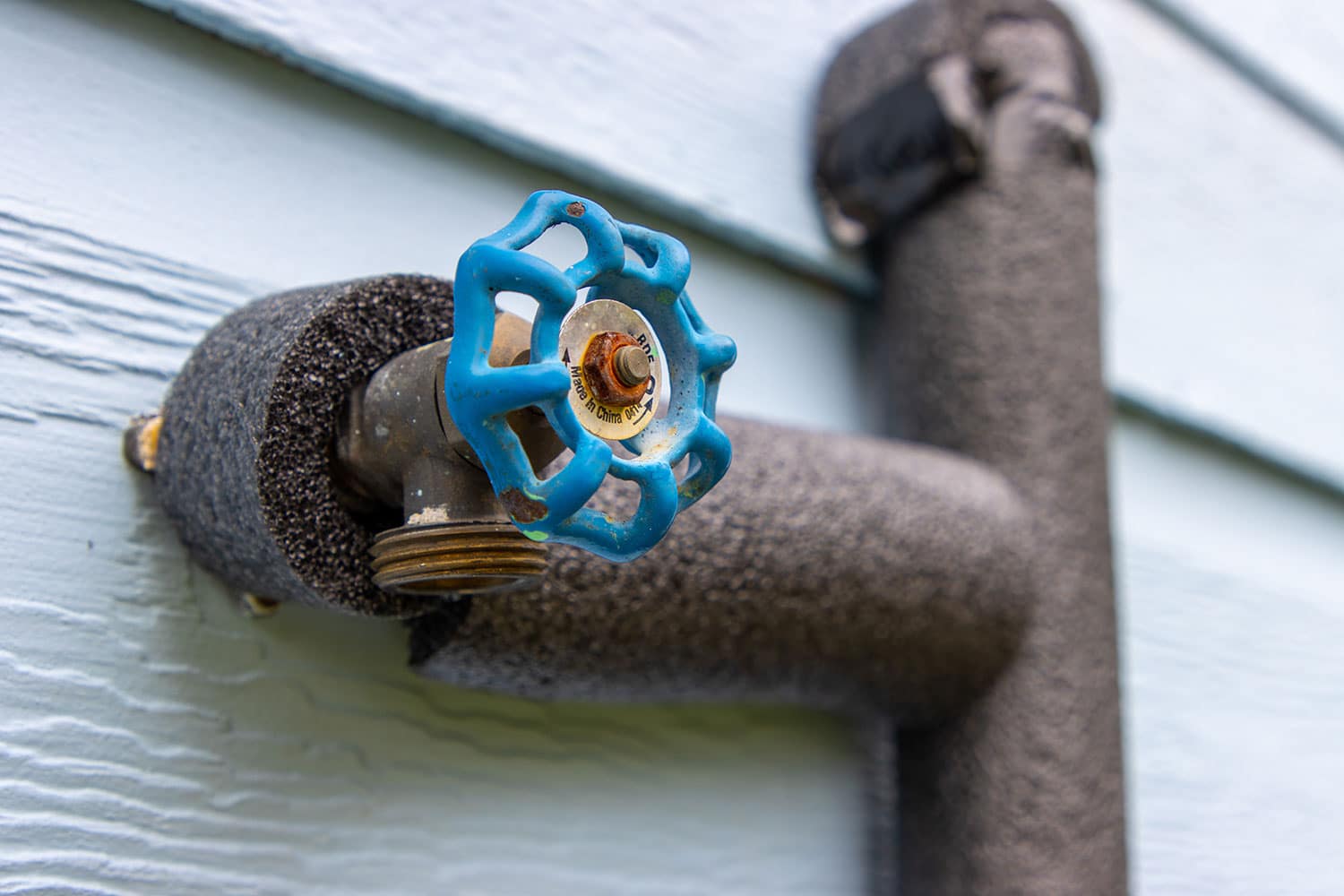It may seem to early for an article about protecting your residential piping and faucets but we just had our first decent cold snap and the plumbers here at Mercy Plumbing thought why not let’s remind people the proper way to protect your outdoor piping and fixtures when the temperature goes below freezing. This is even more important around Katy Texas. Our relative humidity is usually high which tends to create more issues with freezing pipes.
Why do pipes burst when it freezes?
Pipes burst when it freezes because water expands when it freezes. When water freezes, it forms crystals that take up more space than the liquid water. This expansion can cause a lot of pressure to build up inside the pipes, which can eventually cause the pipes to burst.
The pressure buildup is especially high in pipes that are closed off at one end, such as pipes that lead to faucets. When the water in the pipe freezes, it expands and pushes against the closed faucet. This can cause the pressure inside the pipe to skyrocket, eventually causing the pipe to burst.
Another factor that contributes to pipe bursting is the fact that pipes are often made of materials that are not very elastic, such as copper or plastic. This means that the pipes cannot stretch to accommodate the expanding water, which further increases the risk of bursting.
How about my pipes in the attic?
Yes, pipes in the attic can freeze, especially if they are not insulated. Attics are often unheated, and the temperature in the attic can drop below freezing in cold weather. When the temperature in the attic drops below freezing, any pipes that are exposed to the cold air can freeze.
There are a few things you can do to prevent pipes in the attic from freezing:
- Insulate all exposed pipes in the attic.
- Seal any air leaks around the attic vents and soffits.
- If you have any pipes in the attic that you don’t use during the winter, drain them and turn off the water supply.
- If you are expecting a cold snap, you can let a small trickle of water run from the faucets in the attic to help keep the pipes from freezing.
If you think your attic pipes may have frozen, it is important to thaw them out as soon as possible. You can do this by applying heat to the pipes using a hair dryer or a space heater. Be careful not to overheat the pipes, as this could damage them.
If you are not able to thaw out the pipes yourself, you should call a plumber.
Protecting your outdoor piping
Protecting your outdoor pipes is important to prevent freezing, bursting, and other potential damage. Here are some steps you can take to protect your outdoor pipes:
Insulate Pipes: Insulating your outdoor pipes is one of the most effective ways to prevent freezing. Use foam pipe insulation or pipe sleeves to cover the pipes. Pay special attention to any exposed or vulnerable areas.
Drain the Pipes: Before the cold weather sets in, make sure to drain any water from outdoor pipes that won’t be in use during winter. This is especially important for sprinkler systems and hoses.
Disconnect and Store Hoses: Detach garden hoses from outdoor faucets, drain them, and store them indoors. This prevents water from freezing and potentially damaging the hose.
Install Frost-Free Faucets: If possible, install frost-free faucets. These are designed to drain water back into the house when the faucet is turned off, preventing freezing.
Use Pipe Heating Cables: If you have particularly vulnerable pipes, consider using pipe heating cables. These are electric cables that can be wrapped around the pipes to provide heat and prevent freezing.
Seal Cracks and Gaps: Inspect the areas around outdoor pipes for any gaps or cracks in your home’s foundation or walls. Seal these to prevent cold air from reaching the pipes.
Add Insulation to Crawl Spaces and Attics: If your pipes run through unheated areas like crawl spaces or attics, make sure these areas are properly insulated.
Keep a Slow Drip: In extremely cold weather, allowing a small amount of water to continuously drip from the faucet can help prevent freezing. Moving water is less likely to freeze.
Install Outdoor Faucet Covers: These are special covers designed to protect outdoor faucets from freezing temperatures. They provide an extra layer of insulation.
Use Heat Lamps or Space Heaters: For particularly vulnerable pipes, you can use heat lamps or space heaters in the vicinity. Be cautious with this method and ensure all safety precautions are followed.
Monitor the Weather Forecast: Keep an eye on the weather forecast, especially during particularly cold spells. Take extra precautions if a deep freeze is predicted.
Regular Inspection: Periodically check the outdoor pipes for any signs of damage or wear and tear. Catching and addressing issues early can prevent more significant problems later.
Remember, prevention is key when it comes to protecting your outdoor pipes. Taking these steps before winter sets in can save you from potential headaches and costly repairs later on.


